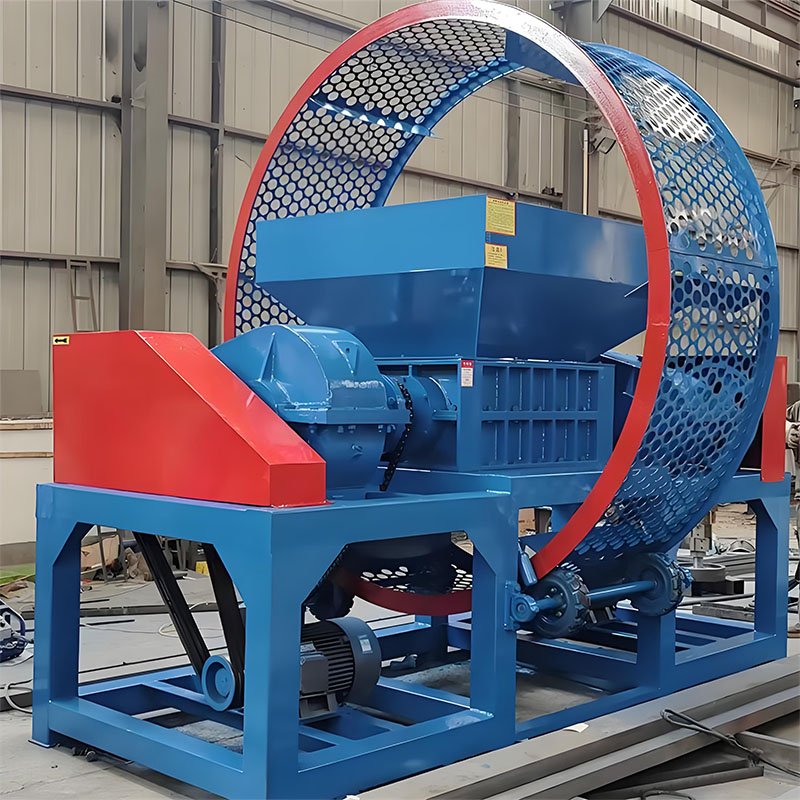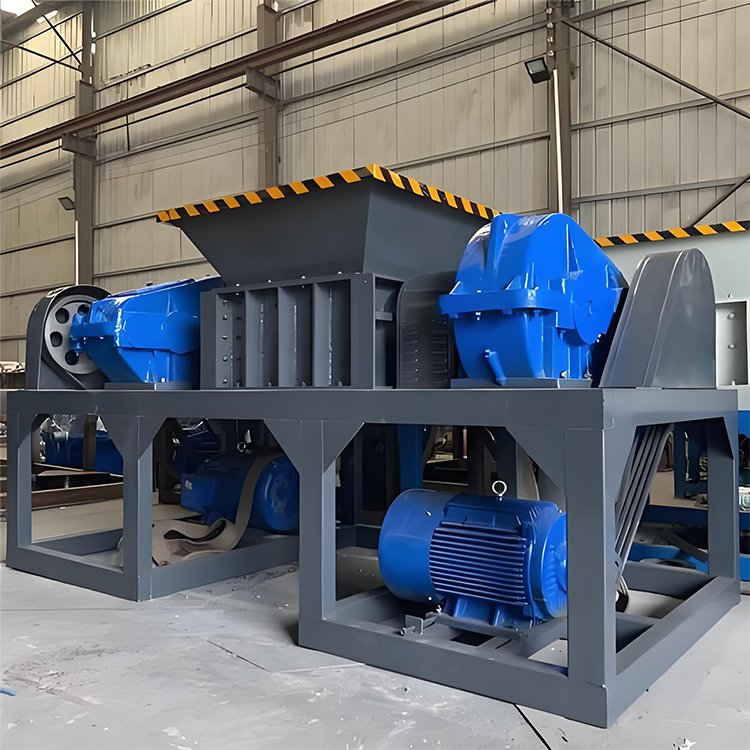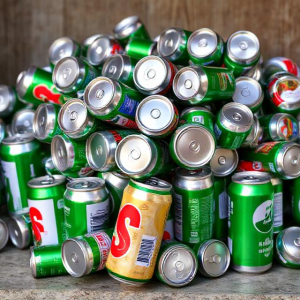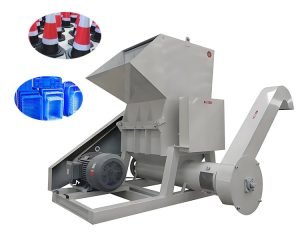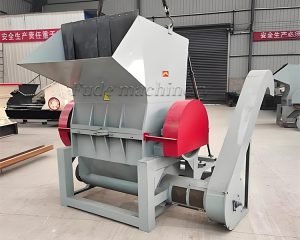Many businesses think buying a powerful shredder is the end of the story. At Fude Machinery, we show them it is just the beginning. A shredder is the front door to a much larger and more profitable factory. A truly efficient and profitable operation uses a complete recycling line. This is a system where each machine works together perfectly. It’s like an assembly line, but instead of building a product, it takes waste apart and turns it into valuable raw materials. As a manufacturer that has built these lines for over 120 countries, we want to guide you. We will show you how to build a smart, automated system that maximizes your profits and minimizes your costs.
This article will help you understand:
Why is a shredder only the first step?
Everything starts with the shredder. The type of shredder you choose and the way it works will determine how the rest of your line is built. A shredder’s job is to take your raw, bulky waste and perform the first, most important size reduction. Its output becomes the input for every other machine down the line. If the shredder produces pieces that are too big, it can damage your conveyors and separators. If it produces pieces that are too small when they don’t need to be, you have wasted energy.
The choice is critical. Are you processing light plastic film? You will need a single-shaft shredder to produce small, uniform flakes. The rest of your line will be designed to handle these light flakes. Are you processing old cars? You will need a massive dual-shaft shredder to tear the car into fist-sized chunks of metal. The conveyors and separators that follow must be strong enough to handle this heavy, abrasive material. Getting this first step right is the foundation of an efficient complete recycling line. The shredder sets the pace and the standard for the entire system.
How do you move material automatically?
Once the material is shredded, you need to move it automatically. A huge mistake businesses make is trying to move shredded material around with loaders or forklifts. This is slow, expensive, and unsafe. Conveying systems are the backbone of a modern recycling line. They are the arteries that carry the material from one process to the next without stopping. This automation is what creates a smooth, continuous flow. It turns a series of stop-and-go tasks into a single, efficient production process.
We design and build different types of conveyors for different jobs. A simple flat belt conveyor is great for moving light plastics or shredded wood. A heavy-duty steel plate conveyor is needed for sharp, heavy scrap metal. A troughed conveyor can move large volumes without spilling. By connecting each part of your line—from the shredder to the separator to the final container—with conveyors, you remove the need for manual labor. This drastically cuts your operating costs and dramatically improves the safety of your yard.
How do you separate valuable metals?
This is the step where you make your real money. Shredding makes material smaller. Conveying moves it. But material separation equipment is what turns your mixed scrap into valuable, clean commodities. Unsorted, shredded material has a low value. But once you separate the steel, the aluminum, and the plastic, each one of those has a high market value. They are clean raw materials that another factory is ready to buy. This transformation from mixed waste to sorted product is the core of a profitable recycling business.
At Fude Machinery, we integrate advanced separation technology directly into our lines. The most common tool is a magnetic separator. This is usually a powerful magnet inside a conveyor belt drum. As the shredded material passes over it, it pulls all the iron and steel (ferrous metals) out of the stream. What is left keeps moving to the next step. Then, we can use an eddy current separator. This machine uses magnetic fields to repel non-ferrous metals. It literally kicks the aluminum and copper pieces off the conveyor belt into a separate bin. This creates three clean streams from one: steel, non-ferrous metals, and other waste (like plastic and rubber).
Actual Case: A customer was shredding old appliances and selling the mixed metal for a low price. We added a conveyor system with a magnetic separator and an eddy current separator to their line. They were then able to produce clean steel, clean aluminum, and clean copper wire. Their revenue from the same amount of scrap nearly tripled. The separation system paid for itself in under a year. This is the power of a complete processing line.
Refining the Product – Screening and Final Sizing
Now that your materials are separated, you might need to refine them further. Many buyers have very specific size requirements. For example, a steel mill might want shredded steel that is no larger than 50mm. A plastic recycler might need plastic flakes that are exactly 10mm. This is where screening and secondary grinding come in. Getting the size right can significantly increase the price you receive for your material.
A trommel screen is a large, rotating drum with holes of a certain size. As the material tumbles inside, small pieces fall through the holes, and larger pieces continue to the end. This is a very effective way to sort materials by size. If you need to make the material even smaller, you would add a granulator or a fine grinder to your line. This machine takes the shredded chunks and grinds them down into a very small, uniform-sized pellet or granule. Offering a clean, separated, and perfectly sized product makes you a premium supplier. This is the final step in maximizing the value of your scrap.
Putting It All Together: A Complete Scrap Metal Line Example
So, what does a full system look like? Let’s imagine a complete scrap metal processing line.
- Infeed: A loader drops mixed scrap metal and old cars onto a heavy-duty steel infeed conveyor.
- Primary Shredding: The conveyor feeds the material into a powerful dual-shaft shredder, which tears it into hand-sized pieces.
- Conveying: A conveyor carries the shredded mix up and under a large drum magnet.
- Ferrous Separation: The magnetic separator pulls out all the steel and drops it into a large pile. This is now a clean steel product.
- Non-Ferrous Separation: The remaining material (aluminum, copper, plastic, rubber) continues on another conveyor to an eddy current separator. This machine kicks the aluminum and copper into a separate container.
- Final Product: You now have three separate outputs: a pile of valuable steel, a bin of valuable mixed non-ferrous metals, and a small amount of waste. You have turned a pile of junk into several streams of revenue.
This entire process is automated. We design our custom recycling solutions to be a single, integrated system that one person can operate from a central control room.
2025 Trend: The “Smart” and Fully Automated Processing Line
The future is total integration. In 2025, the most advanced recycling lines are controlled by a single computer brain (a PLC). This automated processing line uses sensors to make intelligent decisions. For example, if the shredder’s motor is working too hard, the PLC will automatically slow down the infeed conveyor to give it a break. It can track how many tons you process per hour and provide data to make your business more efficient. This level of automation and intelligence reduces the chance of human error, improves safety, and gives you complete control over your production.
Frequently Asked Questions
Question 1: Do I have to buy the whole complete recycling line at once?
No. This is a great benefit of working directly with a manufacturer like us. We can design a modular system for you. You can start with a shredder and a simple conveyor. When your business grows, you can add a magnetic separator. Later, you can add an eddy current separator. We help you build your factory in phases.
Question 2: How much space do I need for a complete recycling line?
The footprint depends entirely on your needs and throughput. A simple line for plastic might fit in a small warehouse. A high-volume scrap metal line will need a large outdoor yard. We create custom 3D layouts for our clients so you can see exactly how the line will fit on your site before you buy anything.
Question 3: What is the most important piece of equipment after the shredder?
For most applications, the most important next step is separation. This is because separation is what creates the most value. Turning a low-value mixed material into several high-value clean materials provides the fastest return on investment.
Summary and Recommendation
A shredder is a powerful tool, but it is not a complete business solution. The key to a truly profitable and efficient operation is building a complete recycling line. This system starts with the right shredder. It uses conveyors for automated flow. It uses separators to unlock the hidden value in your scrap. And it uses screens or grinders to create a perfect final product. Each part works together as a single, smart system.
Stop thinking about buying just a machine. Start thinking about building a factory. As a manufacturer that provides one-stop solutions, we are here to be your partner. We will help you design a complete recycling line from start to finish that is perfect for your material, your space, and your budget. Let’s build a profitable future together.
About Fude Machinery
We are Fude Machinery, a specialist manufacturer of shredder equipment based in Zhengzhou, China. We focus on B2B business, providing robust and reliable shredders for scrap metal, rubber, and mixed solid waste. Our product lineup includes single-shaft, dual-shaft, and four-shaft shredders, and we excel at designing and delivering complete processing lines including conveying, separation, and screening equipment. With facilities meeting the highest standards and products exported to over 120 countries, we are your one-stop solution for recycling systems.
 Fudemetal Crusher
Fudemetal Crusher